Gerbera Daisy vs Zinnia: A Comparison of Two Popular Garden Flowers
Gerbera daisies and zinnias are the most popular flowering plants widely cultivated in gardens and landscapes. Both plants are known for their stunning colors and beautiful blooms, which make them perfect for adding a pop of color to any garden or outdoor space. However, while they may share some similarities, several differences between the two plants are worth exploring.
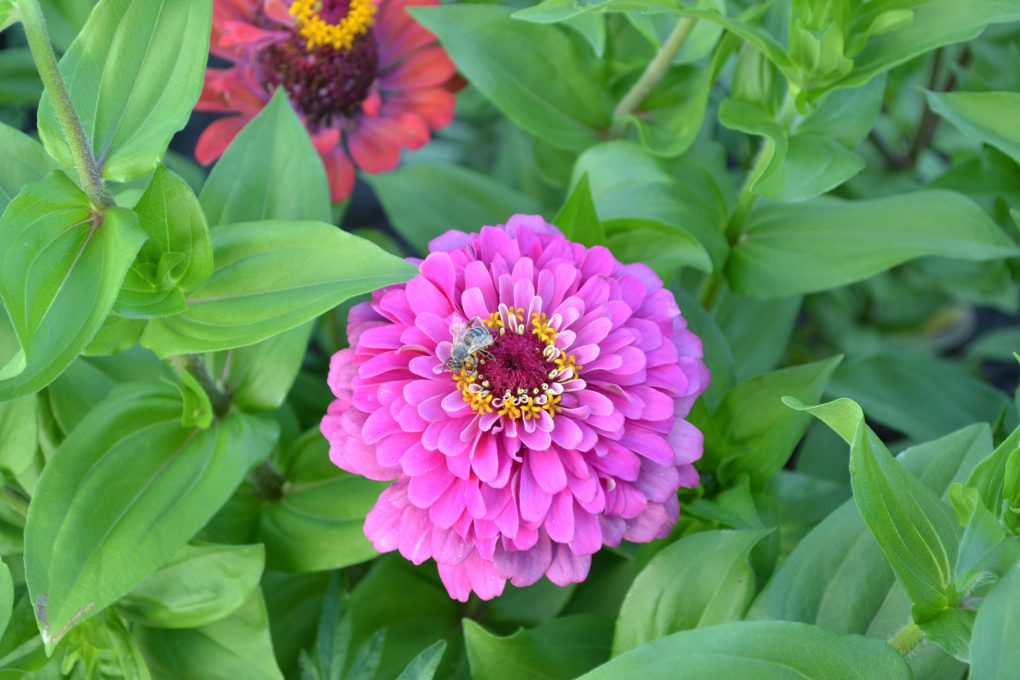
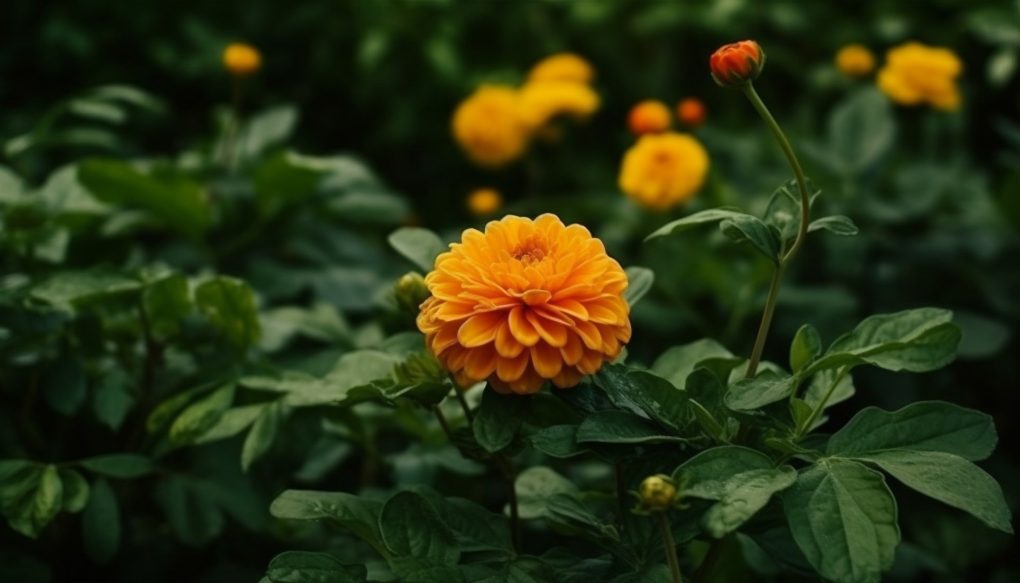
Gerbera daisies are native to South Africa and are known for their large, colorful blooms in various shades, including pink, red, yellow, and orange. They are also popular for their long vase life, making them a favorite of florists and flower enthusiasts. Zinnias, on the other hand, are native to Mexico and are known for their bright, daisy-like flowers that come in a rainbow of colors.
One of the main differences between gerbera daisies and zinnias is their growth habit. Perennial gerbera daisies will grow year after year if properly cared for, whereas annual zinnias only last one season. Also, gerbera daisies prefer cooler temperatures and more moisture than zinnias, which can better tolerate heat and drought conditions.
Table of Contents
Growing Conditions
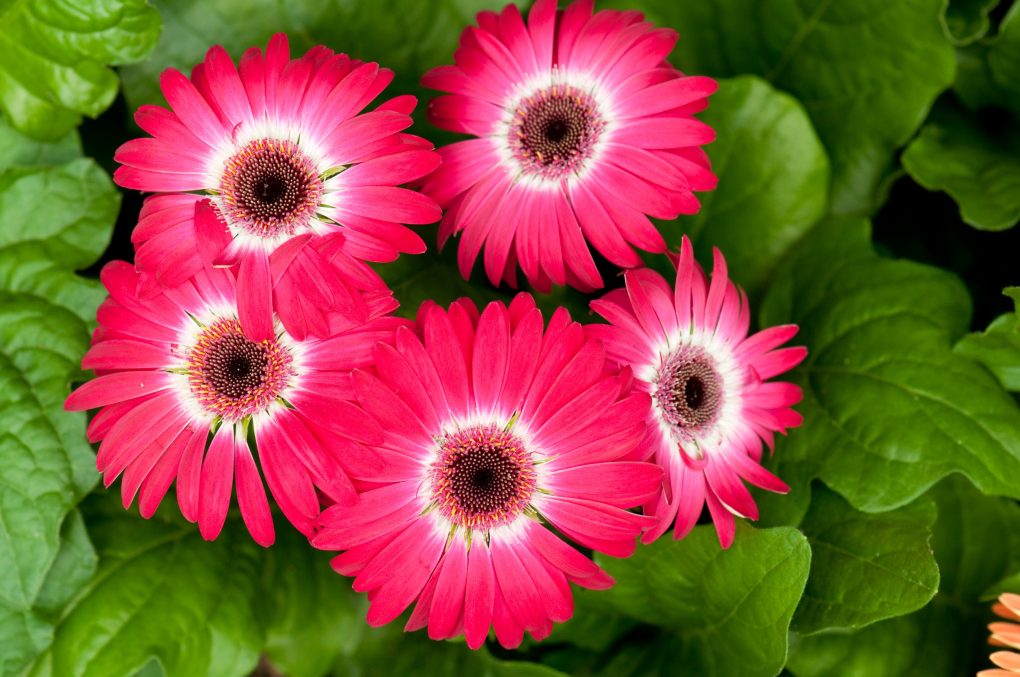
Gerbera Daisy Growing Conditions
Gerbera daisies are native to South Africa and commonly grown annually in North America. Ideally, they need full sun to partial shade and well-draining soil. Gerbera daisies require moderate watering, around 1 inch per week, and should be watered only when the soil has dried an inch or two below the surface. They also benefit from regular fertilization, especially during the growing season.
These flowers do not tolerate frost and should be protected during winter. They can be grown in containers or the ground, but if grown in containers, they should be repotted yearly to prevent overcrowding. Gerbera daisies are also susceptible to powdery mildew and should be planted in an area with good air circulation to prevent this fungal disease.
Zinnia Growing Conditions
Zinnias are native to Mexico and prefer full sun and well-draining soil. They are easy to grow and require minimal maintenance. Zinnias are drought-tolerant and do not require frequent watering, but they should be watered deeply when the soil is dry to the touch.
These flowers are also frost-sensitive and should be protected during the winter months. Zinnias can be grown in containers or ground and benefit from regular deadheading to encourage new blooms. They are not typically affected by pests or diseases but can be susceptible to powdery mildew in humid conditions.
Care and Maintenance
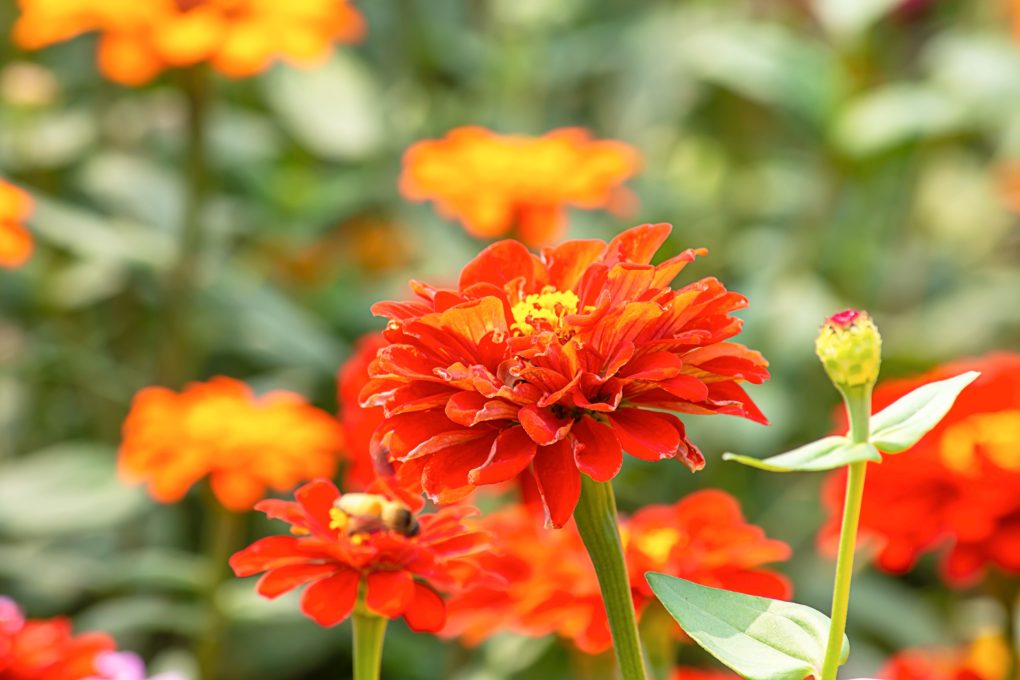
Gerbera Daisy Care and Maintenance
Gerbera daisies are relatively easy to care for and maintain, but they do require some attention to keep them healthy and blooming. Here are some tips:
● Watering: Gerbera daisies prefer moist but well-draining soil. Once a week or when the top inch of soil feels dry, water them deeply. The leaves can become infected if water is applied to them.
● Fertilizing: Feed gerbera daisies with a balanced fertilizer every 2-3 weeks during the growing season. Don’t overfertilize; this can result in leggy growth and fewer blooms.
● Pruning: Deadhead spent blooms regularly to encourage more flowers. Cut back the entire plant by a third in late summer to promote fall blooms.
● Winter Care: In colder climates, gerbera daisies may need to be protected from frost. Cover them with a frost cloth or move them to a protected location. If you live in a warmer climate, they may benefit from afternoon shade.
Zinnia Care and Maintenance
Zinnias are low-maintenance plants that are easy to care for. Here are some tips:
● Watering: Zinnias prefer well-draining soil and don’t like to be over-watered. When the top inch of soil feels dry, water them deeply once a week.
● Fertilizing: Zinnias don’t require a lot of fertilizer, but you can feed them with a balanced fertilizer every 4-6 weeks during the growing season.
● Pruning: Deadhead spent blooms regularly to encourage more flowers. Cut the entire plant by a third in mid-summer to promote fall blooms.
● Winter Care: Zinnias are annuals and will die off in the fall. You can collect seeds from the spent flowers to plant next year.
Uses
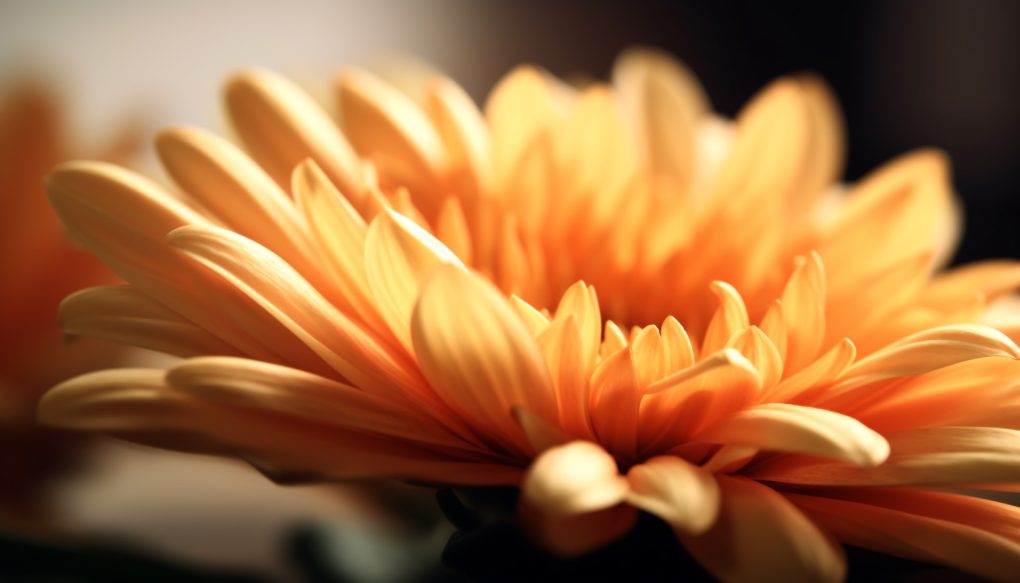
Gerbera Daisy Uses
Gerbera daisies are commonly used for their bright and cheerful appearance and are often used in flower arrangements and bouquets. These flowers are popular for weddings and other special occasions because of their large size and variety of colors. Gerbera daisies are also used in gardens and landscapes, as they can add a pop of color to any outdoor space.
Gerbera daisies have medicinal properties and are used in traditional medicine for their anti-inflammatory and antioxidant effects. They are also used in cosmetic products for their skin-soothing properties.
Zinnia Uses
Zinnias are popular garden plants because of their bright colors and long blooming period. They are often used as bedding plants in borders and container gardens and are also popular cut flowers and are often used in floral arrangements.
Zinnias have traditionally been used in traditional medicine for their anti-inflammatory and antipyretic properties and in cosmetics for their skin-soothing properties.
Zinnias are also used in scientific research as a model organism for studying plant genetics and development.
